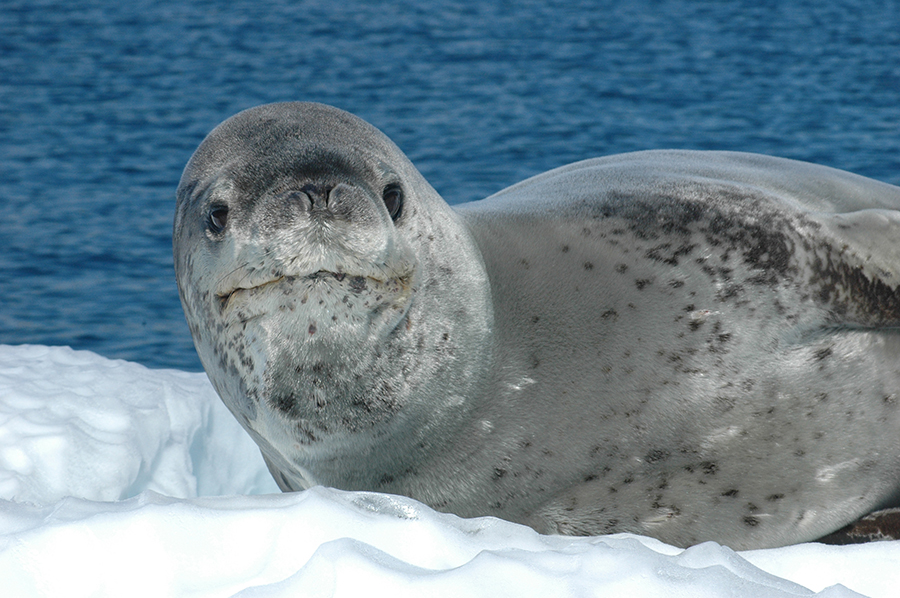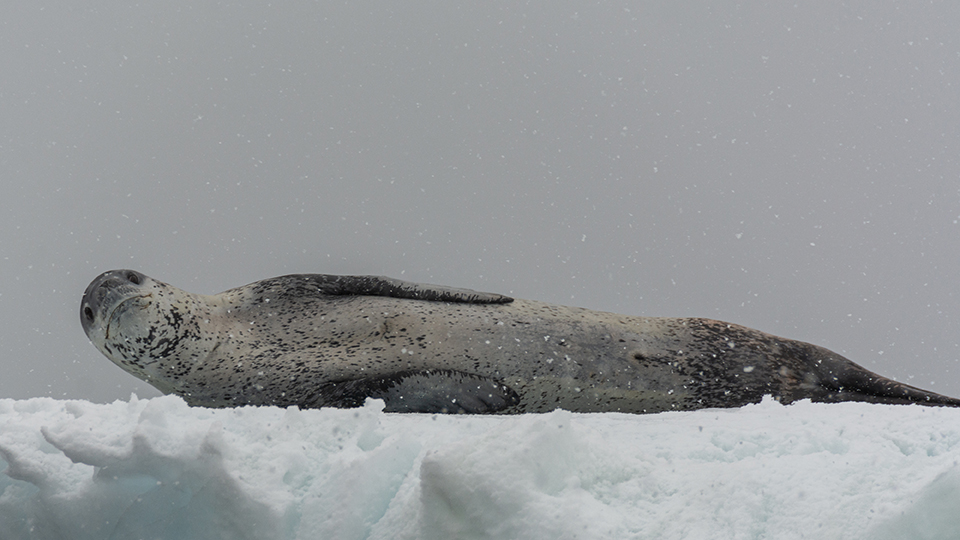Female leopard seals are way, way bigger than their male counterpartsThe Antarctic predators are one of the most extreme examples among marine mammals of females being larger than males, according to new researchPosted November 07, 2022
New research shows female leopard seals can be up to twice as large as males, a far bigger difference in body size between the two sexes than biologists previously observed. A new study examining the basic traits and behaviors of leopard seals along the West Antarctic Peninsula finds that not only are females much larger than males, but there's a great deal of variability in body size and activity among individual seals. The findings suggest leopard seals have a biological resilience that may give them an advantage in surviving the rapidly changing Antarctic environment, according to the researchers. The West Antarctic Peninsula is one of the fastest-warming regions on Earth; the area's sea ice season is shorter than it used to be and sea ice extent is decreasing by as much as six to ten percent every decade. “This study greatly increases our understanding of leopard seals' life history, spatial patterns and diving behavior,” said Sarah Kienle, a marine biologist at Baylor University and lead author of the new study. “Across the animal kingdom, variability is vital for animals adapting and responding to changes in their environment, so we're excited to see high variability in this Antarctic predator.” Distinctions of female leopard sealsLeopard seals are the second-largest seal species in Antarctica, but the basic biology of these top predators has remained somewhat of a mystery to scientists. Historically, leopard seals are solitary animals that live on Antarctic pack ice, so it has been difficult for biologists to study them. In the new study published in Frontiers in Marine Science, Kienle and her colleagues used satellite GPS tags to follow 22 leopard seals off the coast of the Western Antarctic Peninsula during 2018 and 2019. The researchers weighed and measured each seal and tracked their movements using the GPS tags. It was the largest study of leopard seal behavior to date, according to the authors. Prior to this research, it was generally understood that males were somewhat smaller in size than female leopard seals. But the new study shows adult females are actually up to 1.5 times larger on average than adult males and can be up to twice as large in some cases. Among the findings, the scientists measured one of the largest leopard seals ever recorded, an adult female they nicknamed “Bigonia” who weighed nearly 1,200 pounds. The smallest seal they observed was a male who weighed 628 pounds. That large size difference between female and male leopard seals demonstrates one of the most extreme examples of female-biased sexual size dimorphism in marine mammals, according to Kienle and her colleagues. Female-biased sexual size dimorphism is uncommon in mammals and rare in pinnipeds (seals, walruses, and sea lions). Often, males are larger than females. Researchers aren't sure why female leopard seals are so much bigger than males, but it could be that females need the extra body weight when they become mothers: new moms fast while nursing their pups. Movement PatternsThe new study found leopard seals exhibit a great amount of variability in not only body size, but also in how far they swim and how deep they dive. The researchers observed one seal in the new study swimming over 1,000 miles away from its original location, while another swam only about 28 miles away. Leopard seals are, however, short and shallow divers. The 22 seals followed in the new study dove on average about 100 feet in depth for 3-minute periods, but one seal among them, a male the scientists nicknamed “Deadpool,” dove over 4,000 feet down for 25 minutes. “It's interesting to see such variation [in movements and dive behavior] in a relatively small number of animals,” Kienle said. “To me, this means that leopard seals are highly flexible in their movement patterns, and that's a really good thing in terms of adapting to changes in your environment.” This adaptation to their environment may be the leopard seal's secret to survival. The International Union for Conservation of Nature estimates there are approximately 18,000 remaining adult leopard seals on Earth. While calculating the exact number of leopard seals still alive is incredibly difficult, the estimated population is substantial considering the environmental changes this predator has had to endure. “Together, our results showcased high plasticity among leopard seals tagged in a single location,” the authors wrote. “These flexible behaviors and traits may offer leopard seals, an ice-associated apex predator, resilience to the rapidly changing Southern Ocean.” The scientists will continue to analyze data from these 22 leopard seals. Kienle plans on comparing the leopard seals from this study to other populations of leopard seals across the Southern Ocean. This research is supported by the National Science Foundation, which manages the U.S. Antarctic Program. NSF-funded research in this story: Daniel Costa, University of California Santa Cruz, award 1644256. All research was conducted under scientific authorizations from the National Marine Fisheries Service (permit no. 19439) and the Antarctic Conservation Act (permit no. 2018-016). |
"News about the USAP, the Ice, and the People"



For USAP Participants |
For The Public |
For Researchers and EducatorsContact UsU.S. National Science FoundationOffice of Polar Programs Geosciences Directorate 2415 Eisenhower Avenue, Suite W7100 Alexandria, VA 22314 Sign up for the NSF Office of Polar Programs newsletter and events. Feedback Form |




